
Ahmed Harouz
Ahmed Harouz is an artist and the coordinator of the Association Essaouira-Mogador, which was founded in 1992 to promote the sustainable development of the community. Of the importance of the Mellah neighborhood, he said, “I opened my eyes in Essaouira...my age is 63...and this is also where I would like to close my eyes.”
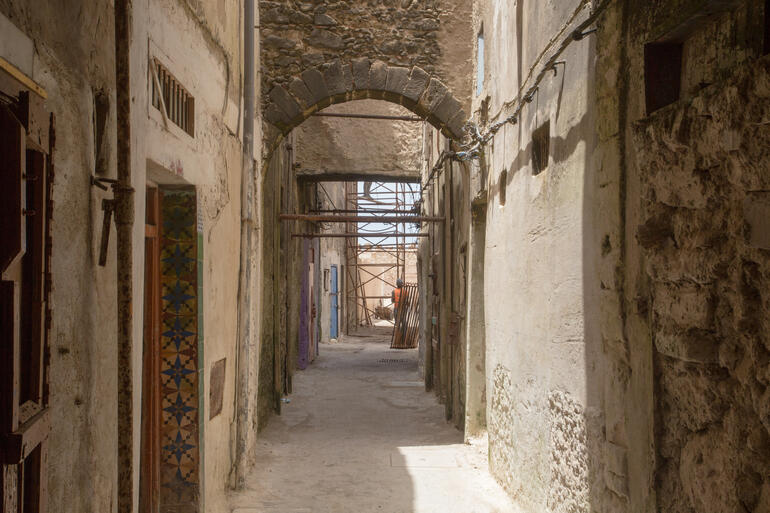
As a child, Ahmed would wake up and attend his mosque before going to school. On the stairs of the same building would be his Jewish friends Haim and Solomon, who were about to attend synagogue with their father. “The Mellah was not the Jewish district of Essaouira,” he explained. “There were Muslims and Jews who lived together. Essaouira is an example of inter-religious community life, in which we shared our feasts, misfortunes, marriages and festivities in harmony and friendship.”
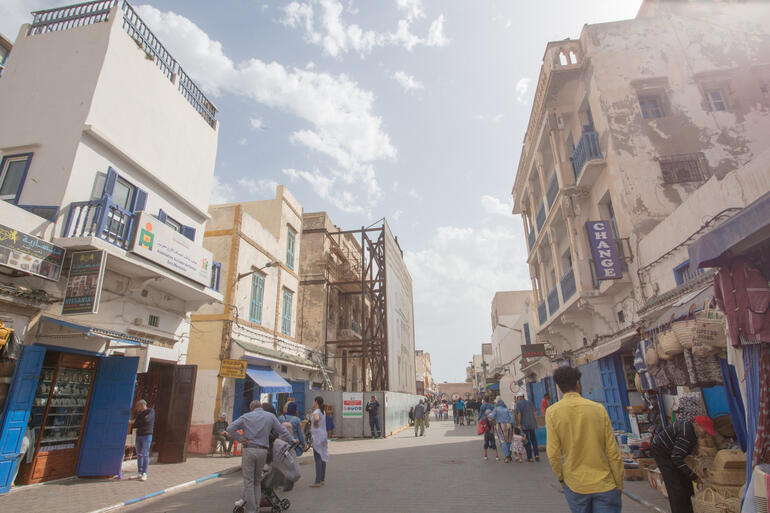
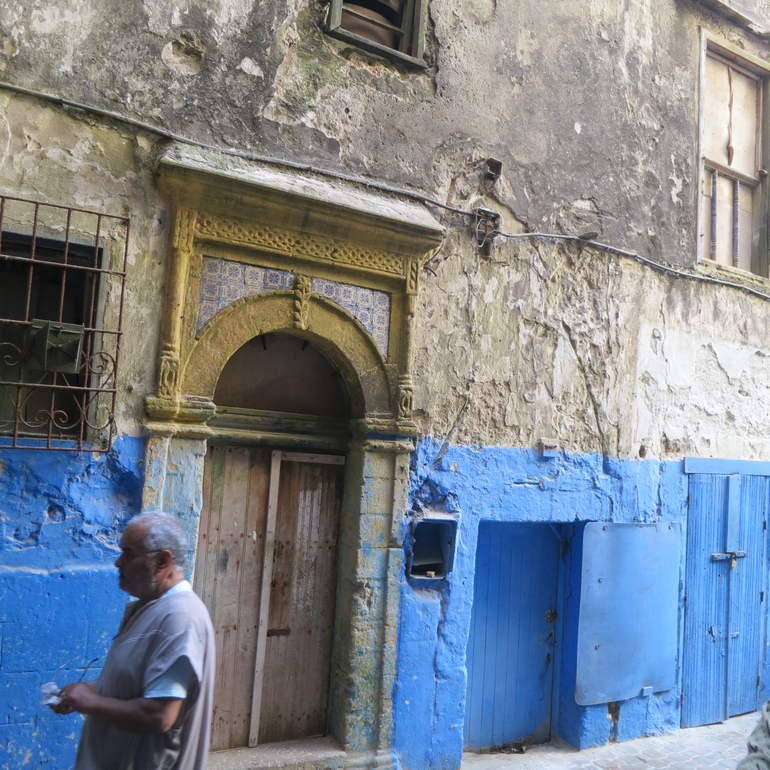
The Mellah became a place of social significance for the acceptance of intermarriage between Muslims and Jews, and the celebration of individual trades and crafts. “Division was really a division of class and not of religion,” he said.

Ahmed explained how the Muslim grandfather of Tariq Outmani, the President of the Essaouira-Mogador Association, was married to a Jewish woman, and how this practice was accepted across social classes. The residents were linked by the shared interest of the nation and not divided by religion. “In Derb Marduk lived many Jewish and Muslim families,” Ahmed described. “The whole alley was like a big house.”
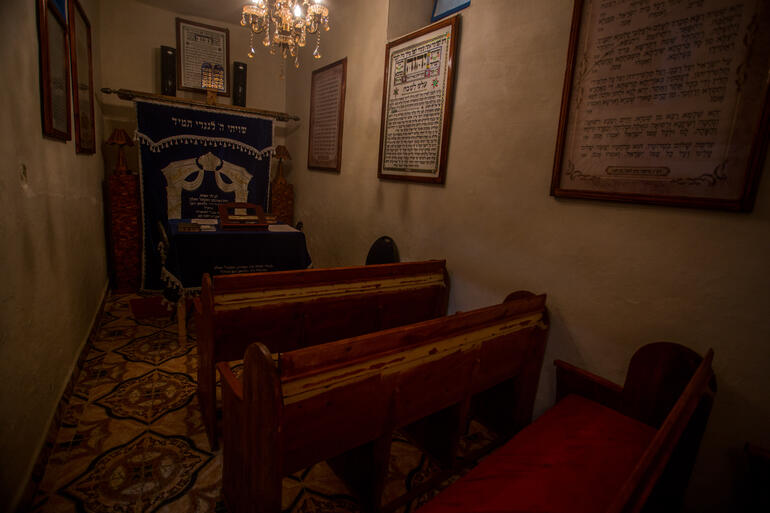
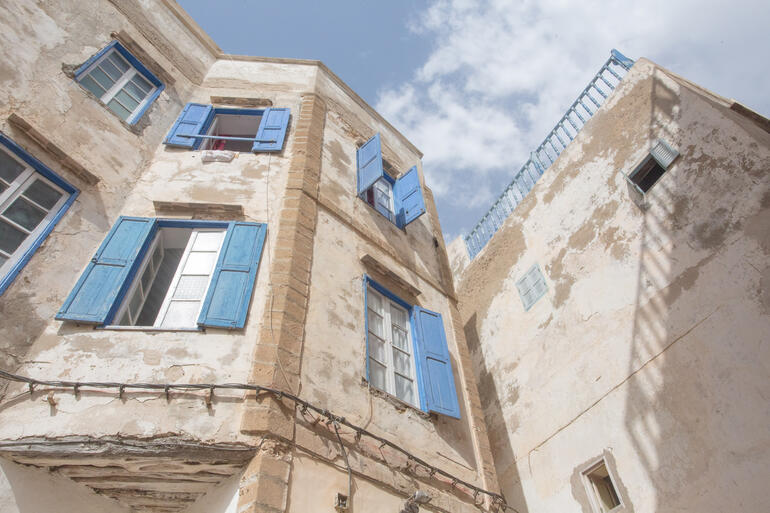
In addition to these shared services, the intangible heritage of Andalusian and Gnawa music continues to bring Moroccans together regardless of Jewish or Muslim identity. “This is what constitutes the identity of Essaouira,” Ahmed described. “Muslim, Jewish, Christian, Sufi, African, Amazigh, Arabic, European - the Andalusian song makes Muslims and Jews sing in the same melody. They do not refuse to sing passages between them because it is Moroccan and has no Jewish or Muslim label.”
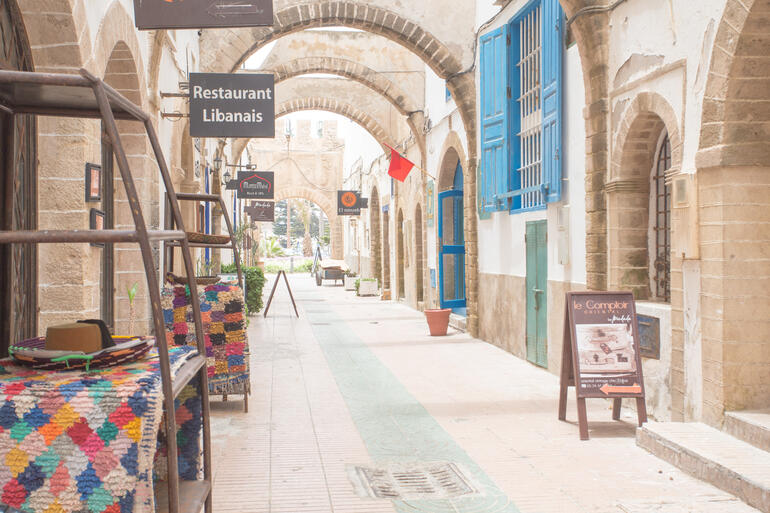
Ahmed painted for us a beautiful picture of the pluralistic community which existed in Essaouira-Mogador, where the Mellah provided a caring home regardless of social, ethnic, or religious background. More examples of these rich memories from before the Jewish migration can be found with Malika Aidrous, the Muslim caretaker of the Haim Pinto synagogue.
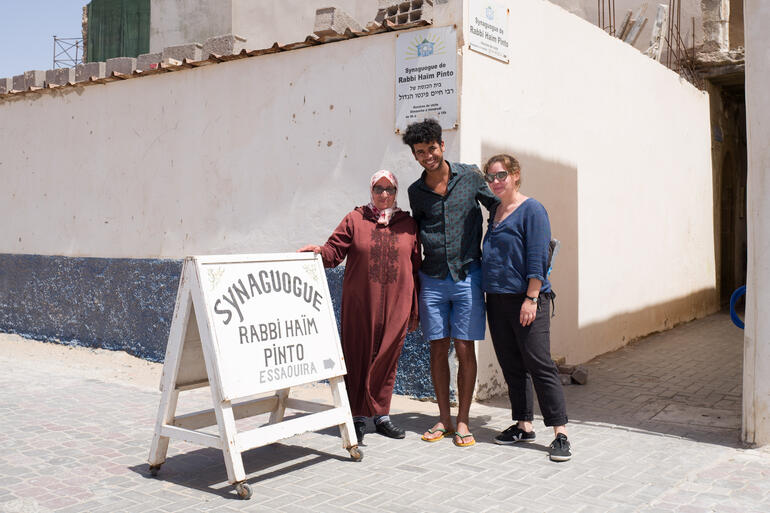
Malika Aidrous
Malika Aidrous has been the caretaker of the Haim Pinto synagogue since her father, its previous steward, passed away in 2000. She has met a growing number of tourists curious about the Haim Pinto synagogue, and has always been happy to show people around inside. Her son is also the caretaker of the nearby Jewish cemetery. When she grew up in the Mellah, it was a majority Jewish population and normal for Muslim and Jewish families to form ties in the same houses.

She recalled how, due to their connections in other countries, the Jewish community had controlled a large share of the economic activity in Essaouira, with key enterprises including leather, almonds, ship building, and pastries.

Similar to Ahmed’s memories, Malika described an Essaouira where there was no consideration of religious affiliation or ethnicity by the community when it came to child-rearing. “We didn’t even pronounce the word Jewish or Muslim. We called people by their names,” she said. “We wouldn’t consider the faith of the child but feed their hunger and thus much cross-breastfeeding happened between families, which entitles you to be part of the family in the Moroccan culture.”
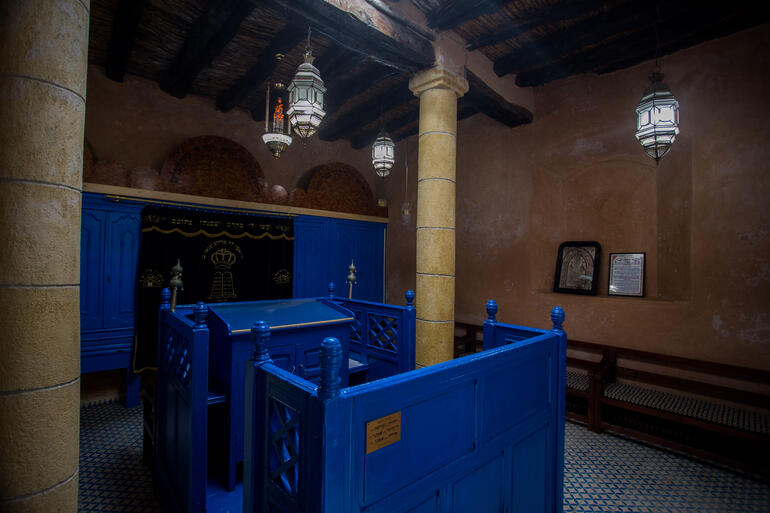
Neighbors also bonded regardless of religious background through the sharing of feasts on special occasions, where both halal and kosher practices were respected and integrated. Malika mentioned how “there was a rule of not cleaning the plates when giving them back, in order not to break the Kosher concept.”
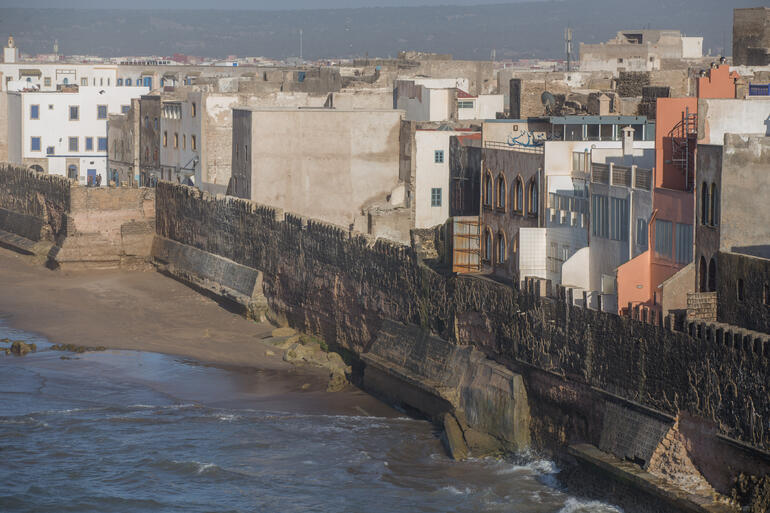
Despite the demolition of many of the surrounding homes in the Mellah since 2000, the Haim Pinto synagogue has endured as a physical reminder of this pluralistic history, and has kept its architectural integrity for more than 200 years. “Back then houses on the coastline still existed and there were craftsmen and local shops still here, while now only the barber, a shoe maker and a grocery shop exist,” Malike described. “The sad thing is that when houses fall, [we also lose] the Zelij [tiles] that are not produced anymore, so it is irreplaceable.”
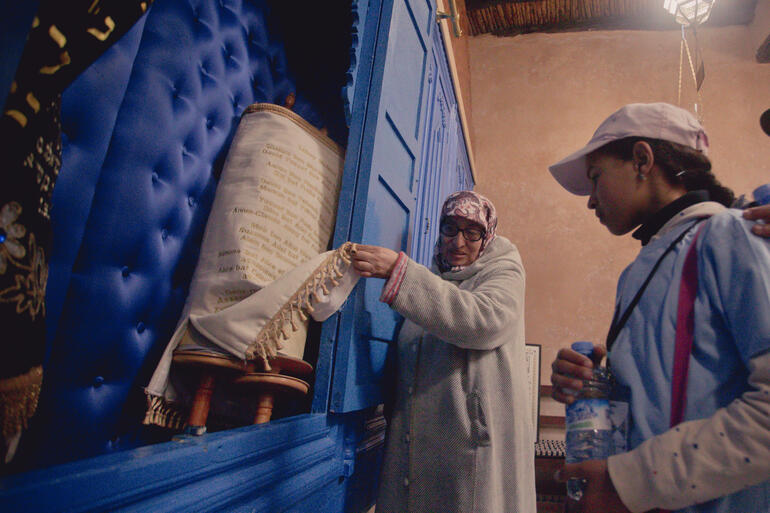
In spite of these threats to much of the physical fabric of the Mellah, Malika explained how for the past four years in particular, there have been more university students visiting the Mellah who are curious about this long history of peaceful coexistence. “There is rising interest in the cultural aspect, and I see the future to be good.”
Hear more stories from the Jewish Quarter of Essaouira, Morocco, by exploring Who Left, Who Remains, and A Walk Through the Mellah.
Special thanks to the David Berg Foundation and the Jewish Heritage Endowment, whose generous support made documentation of this special site possible.
Hundreds of Jewish cultural sites around the world are in danger of disappearing forever, but you can make a difference for these irreplaceable sites with your gift. Learn more and join our efforts today!
